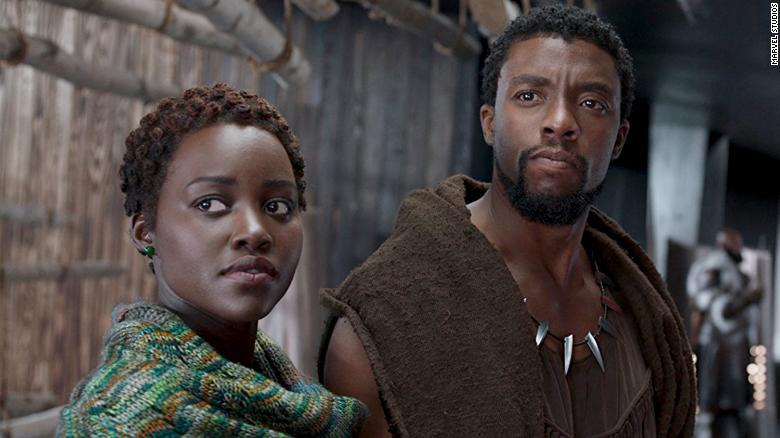As viewers flocked to the theaters to watch hero T’Challa and villain Erik Killmonger clash in a fury of claws, blades and ideals, “Black Panther,” directed by Ryan Coogler, smashed film box office records and scored a 97 percent certified fresh rating on Rotten Tomatoes. The film has been lauded for its portrayal of racial identity and celebration of black culture.
Besides the action-packed fight scenes and futuristic technology, the glamorous reviews and social media hashtags, the core of “Black Panther” reveals pressing injustices in the U.S.
In the beginning of the movie, “Black Panther” portrays images of a poor Oakland community filled with crime, death and poverty, which offers a unique, relatable perspective to those who have lived in crime-ridden lower-class neighborhoods. But now, these young people have a superhero in Black Panther whom they can idolize.
With recent movements such as #OscarsSoWhite striving to incorporate more minority roles in films, “Black Panther” broke barriers by being the first primarily black superhero movie with lead actors Chadwick Boseman, the Black Panther King T’Challa; Michael B. Jordan, Erik Killmonger; and Lupita Nyong’o, T’Challa’s ex-girlfriend Nakia.
In addition to the casting, the setting of the movie draws on a variety of elements from different African cultures. Coogler drew from his experiences visiting Africa to research for the movie. The futuristic society of Wakanda consists of five tribes, each featuring African tribal clothing, face paint and jewelry.
For example, the rings worn around the necks of the female warriors, the Dora Milaje, were inspired by those of the Ndebele tribe in South Africa; the lip plates worn by one elder in the Wakanda throne room are also found in Mursi culture. The rhythmic drum beats and chants heard during fight scenes also have African origins.
Furthermore, Coogler reached to his own roots to create one of the most intricate backstories seen on screen. The movie shows Killmonger’s growth as a young boy in Oakland, where Coogler himself grew up, and his eventual return to Wakanda to overtake the throne. Killmonger faces death and poverty so much that when he finds his own father dead he doesn’t cry because he has grown so used to the violence.
This experience in a poor black neighborhood, a parallel to numerous other neighborhoods in the U.S., inspires Killmonger to devise a plan to supply black people worldwide with Wakanda’s technologically advanced weapons to overthrow governments and create a Wakandan empire where currently oppressed minorities have more freedom.
The movie makes another real-life connection as Oakland was also the birthplace of the Black Panther Party, a political organization that operated in the 1960s and 70s to protect African-Americans from police brutality.
These aspects of the movie send many messages about empowering black communities. Killmonger’s plan, although described as evil in the movie, is a call to action to help minorities in need. In the movie, King T’Challa takes this to heart and sets up an outreach center at the end to provide for the Oakland community where Killmonger grew up.
The movie is an acclamation to those in black communities as well. Already, movements such as #Wakandathevote (which encourages African-Americans that come to watch Black Panther to register to vote) and #WhatBlackPantherMeansToMe (a hashtag where people explain the importance of a black superhero) show the movie’s significance to viewers.
“A lot of what I deal with as an artist is with themes of identity,” Coogler said in an interview with Variety. “I think it’s something common among African-Americans. For us, we’ve got a strange circumstance in terms of our view of ourselves.”
Not only is the movie itself shaking up the film industry, but its accompanying album produced by rapper Kendrick Lamar is also making rounds.
Currently sitting at No. 2 on Billboard’s Top 200 Albums list (No. 1 when the movie first came out,) “Black Panther: The Album” is the perfect complement to the multitude of black empowerment ideas that Black Panther presents. Appearing on the album are South African artists such as Babes Wodumo and Sjava; Californian talents like Vince Staples, SOB x RBE and Lamar himself; southern standouts such as 2 Chainz, Future, Travis Scott and SZA; and British singers Jorja Smith and James Blake.
The choice by Lamar, to gather artists from different backgrounds and different genres, demonstrates the unity among black individuals highlighted in the movie.
In addition, the album showcases racial prejudice and cultural identity, shown in the movie.
Speaking out is the embodiment of both the movie and the album. They spread ideas of change and equality, but also give African Americans and other minorities a sense of identity. In the end, Black Panther is much more than just a 97 percent rating or the hottest album on the Billboard Top 200 list. It’s not just a fantastic film but a defining moment for the entertainment industry.


























